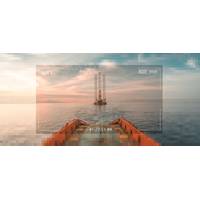
Remote Operations: Challenges & Opportunities
, challenges are still prevalent today, such as limited bandwidth, access to services and comparatively high cost. Until recently, satellite infrastructure has been engineered for users pulling data from the Internet and consuming it at remote sites, via email, applications, or Internet access. To facilitate remote operations, the focus is on uploading or transacting data from the site to decision makers anywhere for consumption, thus reversing the previous requirement.The advent of Low Earth Orbit (LEO) services such as Starlink and OneWeb, together with Medium Earth Orbit (MEO)
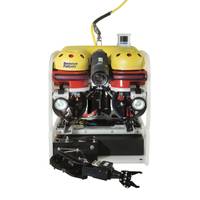
Ocean Dynamics Orders Deeper-rated Saab Seaeye Falcon ROV
quality video.Ocean Dynamics supports the University of Victoria’s Ocean Networks Canada program of 50 instrumentation platforms and six observatories, plugged into over 900 kilometers of fiber-optic cable on the seafloor. The network provides marine scientists and coastal communities internet access to data for ocean management, disaster mitigation, and environmental protection.Along with an inspection role, the Falcon will be assisting in the removal and replacement of instrumentation platforms and cabling when needed.The meter-sized Falcon features five thrusters and an intelligent distributed

Harvest Smart Buoy Tech Helps Deliver Data from the Seafloor
a fraction of the bandwidth typically required, alleviating the challenge of relying on retrospective data to make critical operational decisions.“Harvest’s Nodestream protocol allows customers to receive a live video feed of their subsea assets from anywhere via any mobile device with Internet access,” said Jimmy Dean, Head of Harvest’s Solution Architecture. "Another important feature is the ability to alert onshore headquarters when there is a major change in sensor readings, so customers can respond quickly in emergencies or monitor until intervention is required."
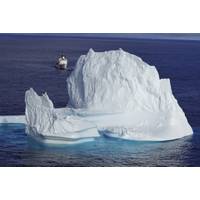
Beyond the Tip of the Iceberg Tech: RDT&E's Annual Arctic Technology Evaluation
and ice detection.Handheld Glare Helios laser for stand-off hailing capabilities.FiFish Remotely Operated Vehicle for underwater inspections in cold weather.Long Range Acoustic Device 500X-RE for enhanced communication with vessels at longer distances.Iridium Certus Terminal, which helped provide internet access for the crew to maintain communications with Atlantic Area.Amber Boguslawski utilizes the AN/PSQ-20 Monoculars (enhanced night vision devices) during a look-out watch on the bridge of the U.S. Coast Guard Cutter Campbell. U.S. Coast Guard photo by SN Kate KilroyMonocularsThe AN/PSQ-20 fused
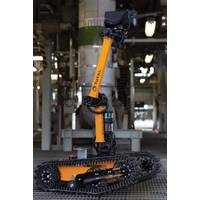
INTERVIEW: Kris Kydd, Head of Robotics, at Total E&P UK; Total’s “Stevie the Robot”
learning algorithms. It also means making the interface for the human operator as simple as possible, first through a mission planning app and second through a Dashboard for presenting the results of the mission.4G/LTE is also much more standard these days. It’s a more recent mobile broadband internet access offering higher capabilities in connectivity as it offers a higher rate of data transfer. During the ARGOS Challenge we experienced black spots with the Wi-Fi network even on small sites because of interference caused by metallic equipment. Our latest robot design has a dual router offering

Ransomware: The IT Danger on the Horizon
effective.Again, the maritime sector faces the same threats as most other sectors. The reliance on IT systems for critical operations, and the integration of IT systems into the operational technology stack, has massively increased in a very short space of time: Even 10 years ago, most ships had no internet access. Today, many are effectively floating branch offices, and they need to ramp up the level of protection just as fast.About the authorBrendan Saunders is a Technical Director and Maritime Lead of the Transport Assurance Practice at NCC Group (https://www.nccgroup.trust/us/), a global cyber security
Inmarsat, ITC Global Expand Connectivity Options
service - which is now installed on over 8,000 vessels - sets a new standard for maritime global communications, with crew welfare, regulatory and operational drivers at the heart.Benefits include affordable voice calls, multiple voice options for crew and operations and high-speed broadband for internet access, plus 24/7 online support by certified engineers. For offshore clients, Fleet Xpress provides added subscription flexibility to meet seasonal and short-term demand changes.Eric Griffin, Inmarsat Maritime, Vice President Offshore & High End Fishing, said: “We are pleased to secure the
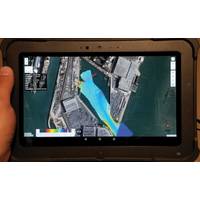
NORBIT DCT – Hydrographic Survey Made Easy
simply navigating with the web browser to the survey PC. Then the mission planning can be shared and modified as needed.A similar feature is available for maps. The Google Maps or Open Street Maps can be cached locally and made available on the survey PC to run the background maps even without the internet access.Quality-driven mission executionDCT offers four types of real-time display accessible via simple tap or mouse click under the layer menu button. These are depth, standard deviation, sounding density and backscatter. The depth by default is simply the depth from the sonar to the bottom and can

New KONGSBERG Mapping Cloud Solution
simultaneously, colleagues in different locations can share the workload and potentially generate invaluable insights.This flexible, user-friendly methodology means that real-time or periodic data from KONGSBERG EMTM systems can be uploaded and processed from literally any geographical location with internet access, and also saves on office space and expenditure as the only hardware requirement is a small PC. Mapping Cloud additionally negates the need for local disk storage in the office: data files are securely transferred, managed, shared, processed and archived on servers hosted in KONGSBERG's
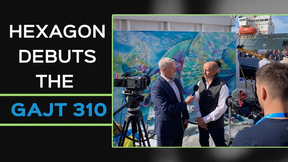
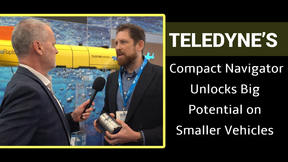
 February 2025
February 2025





